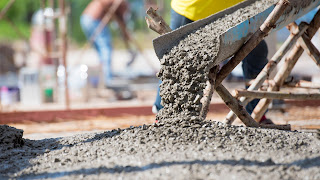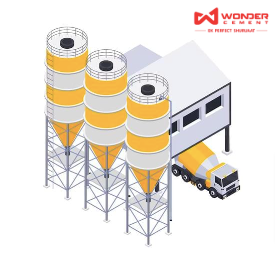Which is best cement for plastering PPC cement or OPC cement?
When it comes to plastering, the type of cement used can play a crucial role in determining the strength, durability, and overall quality of the finished product. The two most popular plastering cement types are PPC (Portland Pozzolana Cement) and OPC (Ordinary Portland Cement). Both types have their own unique properties and benefits; determining which is best for plastering ultimately depends on the specific project requirements and budget.
PPC cement:
It is a type of blended cement that is made by mixing Portland cement with pozzolanic materials such as fly ash, volcanic ash, or calcined clay. The addition of these materials not only enhances the strength and durability of the cement but also reduces the amount of heat generated during the curing process. This makes PPC cement ideal for use in plastering applications, as it results in a smoother and more even finish. The pozzolanic materials in PPC cement react with the calcium hydroxide produced by the hydration of cement, resulting in the formation of additional cementitious compounds. These compounds improve the workability and reduce the permeability of the cement, making it ideal for plastering.
OPC cement:
It is a traditional type of cement made solely from clinker and gypsum. While OPC cement is known for its high compressive strength and early strength gain, it can also result in a rough finish when used for plastering. The high heat of hydration produced by OPC cement can cause cracking and shrinkage, resulting in an uneven finish. This is why OPC cement is not recommended for plastering applications where a smooth finish is desired.
So, which is best for plastering – PPC cement or OPC cement? The answer largely depends on the specific requirements of the project. If a smooth and even finish is desired, PPC cement is typically the better choice. However, if higher compressive strength is needed or if the budget is a concern, OPC cement may be the better option.
It is also worth noting that some manufacturers offer blended cement that combines the benefits of both PPC and OPC cement. This blended cement can offer the best of both worlds, providing a smooth finish while also providing higher compressive strength. Blended cement is made by adding pozzolanic materials to OPC cement. The pozzolanic materials react with calcium hydroxide to form additional cementitious compounds, which improve the workability, reduce permeability, and enhance the strength of the cement.
However, regardless of the type of cement chosen, it is crucial to select a trusted brand known for its commitment to quality and excellence. Wonder Cement is one such brand that offers a range of high-quality cement products that are ideal for plastering applications. With Wonder Cement, you can be confident that you are getting a reliable and durable product that will help you achieve the desired finish for your plastering project.
Wonder Cement is committed to producing high-quality cement products that meet the needs of its customers. Their state-of-the-art manufacturing facilities and strict quality control procedures ensure that every batch of cement is consistent and meets the highest standards of quality. Wonder Cement offers a range of cement products, including PPC and OPC cement.
In conclusion, selecting the right type of cement for plastering is crucial for achieving the desired finish and ensuring the durability and longevity of the plaster. While PPC cement is generally the better choice for a smooth and even finish, OPC cement may be the better option for higher compressive strength or budget constraints. However, it is important to select a trusted brand like Wonder Cement to ensure that you are getting a high-quality product that meets your project requirements.




Comments
Post a Comment